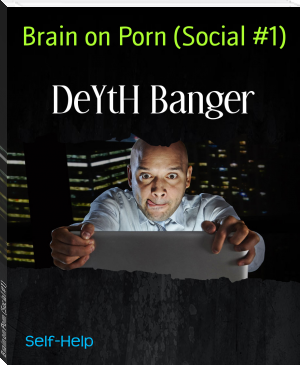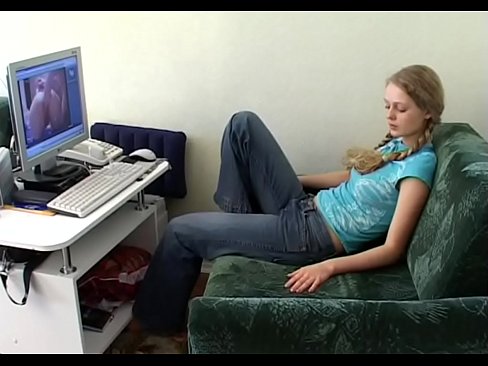Brain on Porn (Social #1) by DeYtH Banger (ereader android .TXT) 📖

- Author: DeYtH Banger
Book online «Brain on Porn (Social #1) by DeYtH Banger (ereader android .TXT) 📖». Author DeYtH Banger
In a survey of 1,500 young adult men, 56% said their tastes in porn had become “increasingly extreme or deviant.” [11] Just like the rats, many porn consumers eventually find themselves getting aroused by things that used to disgust them or things that they might have previously considered to be inappropriate or unethical. [12] In many cases, porn consumers find their tastes so changed that they can no longer respond sexually to their actual partners, though they can still respond to porn. [13]
Once consumers start viewing extreme and dangerous sex acts, things that they thought were disgusting or degrading can start to seem normal, acceptable, and more common than they really are. [14] One study found that people exposed to significant amounts of porn thought things like sex with animals and violent sex were twice as common as what those not exposed to porn thought. [15] And when people believe a behavior is normal, they’re more likely to try it. [16]
Research has also found that watching pornography affects attitudes and beliefs toward sex, women, and relationships. [17] Porn consumers are more likely to express attitudes supporting violence against women, [18] and studies have shown a strong correlation between men’s porn consumption and their likelihood to victimize women. [19] In fact, a 2015 peer-reviewed research study that analyzed 22 different studies from 7 different countries concluded that there is “little doubt that, on the average, individuals who consume pornography more frequently are more likely to hold attitudes [supporting] sexual aggression and engage in actual acts of sexual aggression.” [20] (See How Consuming Porn Can Lead to Violence.)
Obviously, not everyone who looks at porn is going to turn into a rapist, but the reality is that even casual pornography consumption has the power to change ideas and attitudes. [21] When that happens, changes to behavior aren’t far behind. But spreading the truth about the harmful effects of porn helps limit its influence. Porn can corrupt our deepest, most basic instincts, but deep down at that same instinctive level, we know and want what’s healthy. We crave happiness and love. And every individual decision to focus on real love and real relationships moves us back toward the robust, natural lives we’re wired to pursue.


(Note: What's so good in this pictures?
...
watching explicit pornographic content, than going out, playing games, reading a book,
watching tv, laughing, talking with your friends.)
...
Alot of people are convinced that there’s no such thing as an addiction to porn. But science disproved the old belief that in order to have an addiction to something it has to involve a substance that is physically put into the body; like with cigarettes, alcohol, or drugs. Excessive consumption of internet porn bears all of the signs, and dangers, of a true addiction.
Is pornography addiction even a thing?
There’s an ongoing debate right now in the media, and even in academic circles, over whether compulsive porn consumption is truly an addiction. Part of the problem is simply that people don’t agree on exactly what the word “addiction” means. [1] But Dr. Nora Volkow, director of the United States’ National Institute on Drug Abuse (NIDA), is convinced that porn addiction is real. She even suggested changing NIDA’s name in order to recognize “addictions such as pornography, gambling, and food.” [2]
In fact, research shows that of all of the forms of online entertainment—like gambling, gaming, surfing, and social networking—porn has the strongest tendency to be addictive. [3]
Doctors and scientists used to believe that in order to have an addiction to something it has to involve a substance that is physically put into the body; like with cigarettes, alcohol, or drugs. [4] But once scientists started to look inside the brain, it changed our understanding of how addictions work. [5] What’s important, we now know, is not necessarily what gets inside the body or how it got there, but rather what reactions it triggers in the brain. Cigarettes, alcohol, and drugs bring foreign chemicals into the body in a myriad of ways: sniffed, injected, drunk from a glass, or lit on fire and smoked. Porn and other behavioral addictions, like gambling, on the other hand, bring no new chemicals or substances into the body that weren’t already there. But, these behaviors initiate strikingly similar processes inside the brain like substance addictions, and that’s what makes them potentially addictive. They hijack the brain’s reward pathways. [6] (See How Porn Affects the Brain Like a Drug.) That’s what every addictive substance and habit do. [7]
Porn may enter through a different “how” and be a different “what,” but it ultimately does the very same things. [8]
See, your brain comes equipped with something called a “reward center.” [9] Its job is to motivate you to do things that protect and promote your survival—things like eating to stay alive or having sex to produce babies. [10] The way it rewards you for doing those things is by flooding your brain with dopamine and a cocktail of other “pleasure” chemicals each time you do. [11]
But your brain doesn’t always reward you for the right things. For example, it produces higher levels of dopamine when you have chocolate cake than it does for whole-wheat bread. [12] Why? Because 3,000 years ago, high-calorie foods were really hard to come by, so when our ancestors found them, they needed to eat a whole bunch while they had the chance. [13] These days, a bag of Oreos is only as far as the nearest supermarket. If we gorged on them every chance we got, we’d have heart disease and a lot of other health problems.
Porn is basically sexual junk food. When a person is looking at porn, their brain is fooled into pumping out dopamine just as if they really were seeing a potential mate. [14] Sure, filling your brain with feel-good chemicals might sound like a great idea at first, but just like with junk food, it’s more dangerous than it seems.
When porn enters the brain, it triggers the reward center to start pumping out dopamine, which sets off a cascade of chemicals including a protein called DeltaFosB. [15] DeltaFosB’s regular job is to build new nerve pathways to mentally connect what someone is doing (i.e. consuming porn) to the pleasure he or she feels. [16] Those strong new memories outcompete other connections in the brain, making it easier and easier to return to porn. [17] (See How Porn Changes The Brain.)
But DeltaFosB has another job, and this is why its nickname is “the molecular switch for addiction.” [18] If enough DeltaFosB builds up, it flips a genetic switch, causing lasting changes in the brain that leave the user more vulnerable to addiction. [19] For teens, this risk is especially high because a teen’s reward center in the brain responds two to four times more powerfully than an adult’s brain, releases higher levels of dopamine and produces more DeltaFosB. [20]
Overloaded with dopamine, the brain will try to defend itself by releasing another chemical called CREB [21] (It’s called CREB because no one wants to have to say its real name: cyclic adenosine monophosphate response element binding protein!) CREB is like the brakes on a runaway reward center; it slows the pleasure response. [22] With CREB onboard, porn that once excited a person stops having the same effect. [23] Scientists believe that CREB is partly why consumers have to keep increasing their porn intake to get aroused. [24] That numbed-out state is called “tolerance,” and it’s part of any kind of addiction. [25]
As porn consumers become desensitized from repeated overloads of dopamine, they often find they can’t feel normal without a dopamine high. [26] Even other things that used to make them happy, like going out with friends or playing a favorite game, stop providing enjoyment because of the dulling effects of CREB. [27] They experience strong cravings and often find themselves giving more of their time and attention to porn, sometimes to the detriment of relationships, school, or work. [28] Some report feeling anxious or down until they can get back to their porn. [29] As they delve deeper into the habit, their porn of choice often turns increasingly hard-core. [30] And many who try to break their porn habits report finding it really difficult to stop. [31]
If this sounds like the classic symptoms of addiction, well….the head of the United States’ National Institute on Drug Abuse agrees.
....
Frequent porn consumers usually need an ever-increasing dosage over time in order to feel the same level of enjoyment, and they often have to seek out more extreme and hard-core forms of porn. Porn consumers can reach a point where they enjoy porn less and less, but want it more and more.
Have you ever wondered how pornographers who charge for their material stay in business when there’s so much porn available for free? As Wendy Seltzer—an attorney and fellow at Yale Law School—explained, the answer is actually pretty simple: once porn consumers get hooked, they’ll want more and more. “Seeing [free porn] just whets their appetite for more,” Seltzer said. “Once they get through what’s available for free, they’ll move into the paid services.” [1]
How can pornographers be so sure? The answer is right there inside the brain.
Like any potentially addictive substance, porn triggers the release of dopamine into a part of the brain called the reward center (a.k.a. reward pathway or system). [2] Basically, the reward center’s job is to make you feel good whenever you do something healthy, like eating a great meal, having sex, or getting a good workout. [3] The “high” you get makes you want to repeat the behavior again and again. [4] (See How Porn Affects The Brain Like A Drug.) Your brain is hardwired to motivate you to do things that will improve your health and chance of survival. [5] Simple.
Well…not quite so simple. Researchers have recently discovered that the reward center is actually two different brain systems, a “Liking” system and a “Wanting” system, that work in different—sometimes opposite—ways. [6] Understanding how they work helps explain why porn can be habit-forming and why consuming porn is often an escalating behavior.
Liking
The “Liking” system is a tiny portion of the reward center. [7] It provides the enjoyable feelings you get when you win a game, share a kiss, or experience any natural, healthy reward. [8] Unfortunately, it also lights up for counterfeit rewards like cigarettes, drugs, or porn, which is why addictive substances feel enjoyable at first. [9]
When something activates your reward center and you feel that intense high from the “Liking” system, your brain starts producing a chemical called CREB. [10] CREB acts kind of like a set of brakes on the reward system. [11] Normally it makes the pleasure fade and leaves you feeling satiated and ready to get on with your life. (See How Porn Can Become Addictive.)
But if the “Liking” system gets stimulated too much over time (as often happens with drugs or porn), CREB levels build up until your whole pleasure response goes numb. [12] Some researchers believe that an excess of CREB is the reason addicts experience tolerance, which means that they feel less enjoyment from the stimulant and need to use more of it to reach a high. [13] In fact, too much CREB floating around in your brain can dull the enjoyment of anything, which may be why addicts often feel bored, detached, and depressed. [14]
Wanting
The “Wanting” system is a much larger area in the reward center, and it causes the brain to rewire itself in response to intense pleasure. [15] With the help of





Comments (0)